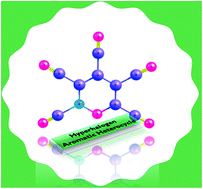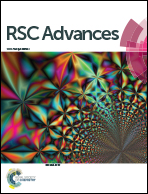Super/hyperhalogen aromatic heterocyclic compounds†
Abstract
Aromatic heterocyclic molecules play an important role in synthetic organic chemistry due to their wide range of reactivities. Because of their aromaticity, they have a lower tendency to accept electrons, and have accordingly been found to have very low and even negative electron affinity values. Superhalogens on the other hand mimic the chemistry of halogens by having electron affinity values higher than that of chlorine, which has the highest electron affinity (at 3.6 eV) of the elements in the periodic table. It is therefore challenging to make superhalogens out of aromatic heterocyclic molecules. In the current work, however, we showed that this is indeed possible by carrying out first-principles calculations. By employing a systematic approach, we were able to achieve superhalogenic aromatic heterocycles having an electron affinity value of 6.00 eV.


 Please wait while we load your content...
Please wait while we load your content...